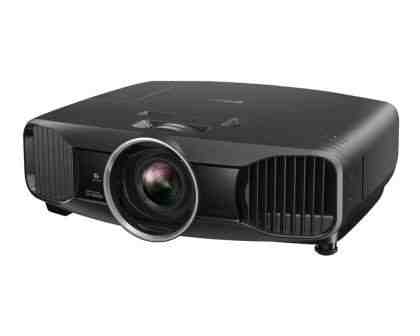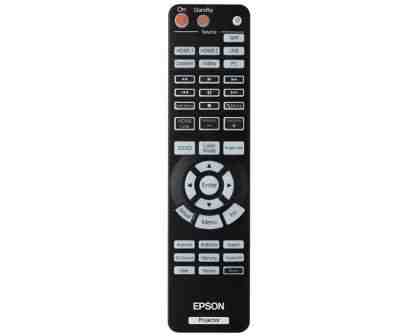Epson has two top-end home cinema projectors: the EH-TW9100, reviewed here, and the EH-TW9100W. The Full HD systems are both 3D ready with an incredibly bright 2,400 lumen lamp, but the TW9100W (£2,900 from www.superfi.co.uk) possesses a wireless HDMI video-streaming system, which should make setup easier. Image quality will be identical, regardless of which model you buy. We’ve reviewed the non-wireless EH-TW9100.

The main unit is best mounted to the ceiling or installed on a shelf as it takes up a considerable amount of floor space. The centrally mounted lens and front-facing heat exhausts will keep the lamp at its working temperature no matter where you fit it, but be aware that you’ll need to be able to reach the focus and zoom rings, along with the horizontal and vertical lens shift dials on top of the unit, because it has no electronic lens adjustment. Having both horizontal and vertical shift on hand helps immensely during setup, and is far more useful than the digital keystone system. It’s there if you must use it, but it impacts picture quality and is best avoided. We had no problem getting the projector aligned correctly and fitting the image to our screen with its 2.1x optical zoom lens.
All the inputs are located at the rear of the projector, with two HDMI ports providing the most up to date connectivity. There’s also VGA, component and composite video connectors, as well as an RS-232 serial port and a 12v trigger output for wiring in a screen motor or other automation system. Epson has neglected to fit the system with any speakers, but most customers will connect it to an amplifier and surround sound speakers rather than rely on less powerful internal speakers for watching sports or films. There are no audio outputs; be aware of this if you have older equipment that doesn’t work with HDMI.

Thankfully, you can control everything using the fully backlit remote control once the system’s installed and adjusted. It’s extremely useful for changing picture modes in the dark, and has buttons for all major functions, including source selection, colour modes and Epson’s Super Resolution upscaling system. Epson’s Super Resolution upscaling seeks to sharpen each standard definition frame independently, so that the projected image doesn’t look as blurred. The onscreen menus are just as easy to navigate and easy to read. They’re sensibly divided into submenus and don’t obscure the entire image. A closer look at the menus revealed plenty of useful calibration tools, including Kelvin-based colour presets, lamp economy settings, gamma settings and brightness, contrast, sharpness and tone sliders.
You also have control over Epson’s auto-iris system, Super Resolution and frame interpolation, as well as the intriguing Correct LCD Align option. This uses a scaling system to adjust the image projected by the blue and red LCD panels, preventing any red or blue ‘bleed’ around the edges of brightly lit objects. Even with the feature enabled, we noticed one or two red colour errors around bright lines and text.
The four 2D picture presets (cinema, living room, dynamic and natural) are all perfectly usable straight away, although we recommend using the natural setting as a starting point for custom calibration as it has a less harsh colour palette that looks much more like reality. Our reference footage looked very impressive, mainly thanks to the excellent contrast, especially if you use the dynamic iris mode. Even the High setting is relatively unobtrusive, producing deep blacks without crushing the shadow detail.
